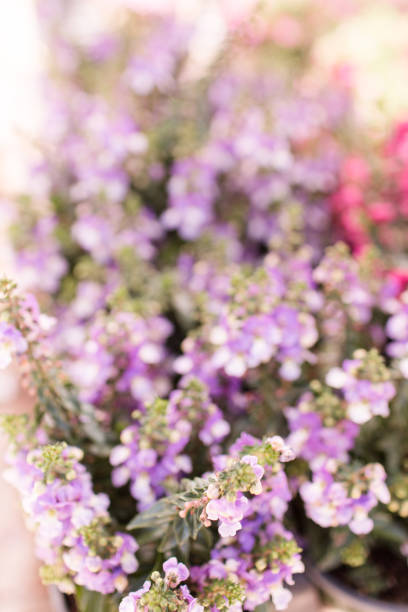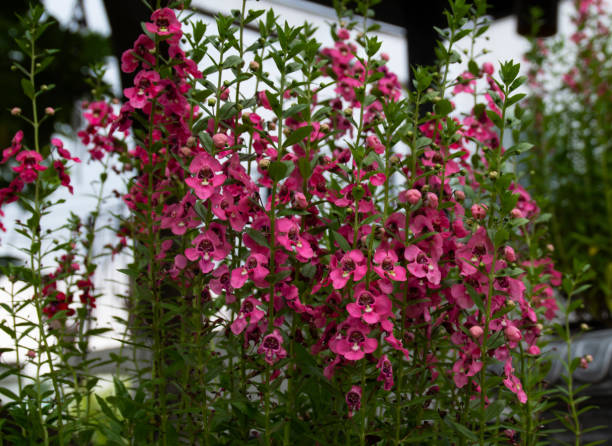How To Care For Angelonia?
Summer snapdragons are another common name for angelonias, which comes from the abundance of beautiful flowers that resemble snapdragons. Despite their appearance, these plants are surprisingly low-maintenance. Perennial and annual varieties are both available. According to the USDA hardiness map, this plant can be grown in zones 9-11.
It’s important to remember a few things when taking care of Angelonia. First, make sure that the soil is kept moist at all times. Provide them with adequate sunlight, prune diseased branches, and feed them once a month. Keep reading!
Table of Contents
Care Tips of Angelonia
Providing them with well-draining soil and full sun exposure is important to care for angelonia. Angelonia plants thrive in warm temperatures, so be sure to plant them after the threat of frost has passed. When it comes to the different types of angelonia, there are several varieties to choose from, including Serena angelonia, Archangel angelonia, and Angelface angelonia. Each type of angelonia has its unique characteristics and requirements, so it’s important to research and understand the specific needs of your chosen variety. For example, you can enjoy their colorful blooms all season long by providing your angelonia plants with the proper care.

Soil
Plant in rich, well-drained soil to thrive. Angelonia plants can thrive in various soil types, but planting them in soil high in organic matter reduces their watering and fertilization requirements. Grow in raised beds or containers with clay soil to prevent root rot. If you have clay soil, consider growing in raised beds or containers.
Water
After the establishment of Angelonia plants, the use of water allows them to become drought tolerant. Water only when the soil’s upper surface appears to be completely dry. For a longer period, wet foliage and flowers are more susceptible to fungal diseases.
Water directly into the base of the plant to avoid this. Keep in mind that when Angelonoa does not receive enough water, it begins to wilt. Water your plant thoroughly, and it will be happy once more. If your plant is suffering from a fungal disease, read this article to learn how to get rid of powdery mildew on your plants.
Light
Light Plants should be placed in an area where they will receive at least six hours of sunlight. Plants that receive less than six hours of sunlight per day will become leggy and produce less flowering activity. Make sure they have as much light as possible.
Pruning
Many people have inquired as to how to prune an angelonia plant. In contrast to many annuals, Angelonia plants do not require pruning to produce more blooms. On the other hand, prune stems 4-5 inches deep to encourage bushier growth.
Temperature and Humidity
Angelonia plants thrive in hot and humid climates because they are adapted. They do particularly well in the southern United States, where hot, humid conditions prevail. This plant does well in the southwestern United States, requiring little additional watering.
Fertilizer
Fertilizer If you did not plant in rich compost soil, you would need to fertilize your plants from the second year on. If your plant is more than a year old, fertilize it once during the growing season to keep it healthy. A disproportionate amount of fertilizer will result in more foliage growth than flowers and may even cause the plant to die. Use a balanced fertilizer that contains a time-release mix of 10-5-10 or 12-12-12 to prolong the blooming period of your plant.

Winter Care
When the average nighttime temperature falls below 60°F (15.6°C), angelonia plants in containers are brought indoors. Plants can survive the winter if placed in an area that receives bright, direct sunlight and is watered once a week. When the temperature rises above 60°F (15.6°C) in the spring, move them back outside and continue with your regular maintenance. It is not uncommon for angelonia plants to die if they are left outside in cold weather, and they will not return the following year. The plants in zones 9 through 11 will behave as perennials if allowed to remain outside throughout the year; however, they should not be fertilized during the winter.
How To Propagate Angelonias
- When it comes to propagating angelonias, seeds and stem cuttings are effective methods.
- Remove about 3″ inches of the stem’s tip, leaving no flowers on the stem after cutting it out.
- With a root system in place, remove most of the leaves, leaving a few at the very top because the stem is not strong enough to support additional leaves.
- These cuttings are immersed in a rooting hormone before being planted in moist soil.
- The plants must be spaced approximately 12″ apart.
- The plant should be moved to the garden as soon as new leaves appear.
- As a bedding plant, it should be placed in direct sunlight or partial shade in late spring or a few weeks after the last frost, preferably in direct sunlight.
Common Pests and Diseases
Acrid aphids are a threat to the health of angelonia plants. Its growth is particularly rapid during the early stages of plating. Neem soap, applied twice a week, will eliminate pests from your plant before they have a chance to damage it.
